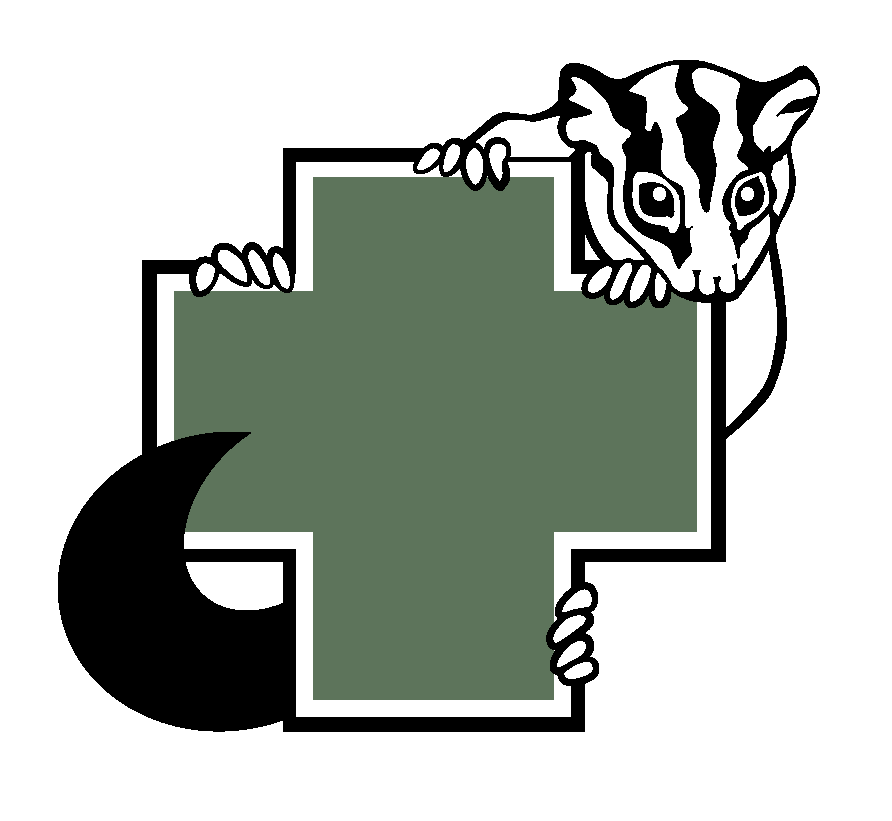RESCUE ADVICE
Snakes
Snakes become active in Spring when they come out of hibernation to get ready to breed and feed up for next winter. They’re also active around Autumn when they’re looking for a safe place to hibernate. Many get injured on our roads as they like the extra warmth from the tarred roads. Hunter Wildlife Rescue gets many calls during these periods for injured and uninjured snakes.
If you come across an injured snake, please call our 24/7 Rescue Line. If there is an uninjured snake in your house, please call a professional licensed snake catcher and they will remove and relocate the snake for you.
If you find an injured or sick snake, please call our 24/7 Rescue Line on 0418 628 483. It is operated by volunteers at WIRES. They will alert our team and a trained rescuer will be out as soon as possible.
Rescue Advice
Observe from a safe distance
- Keep a safe distance from the reptile. Most healthy snakes will move away if left undisturbed.
- Do not attempt to handle the animal unless you are trained and equipped to do so.
- If possible, take note of the animals colour, size, and markings.
- Knowing the species can help wildlife rescuers provide better assistance.
Keep others safe
- Warn others in the vicinity about the presence of the reptile.
- Ensure children and pets are kept at a safe distance.
Call for assistance
- If the snake is injured, or is an immediate risk to humans (i.e. trapped in the house), contact Hunter Wildlife Rescue immediately.
- Provide as much information as possible, including the location, species (if known), and any observed behaviour.
- It is critically important to keep the animal in direct sight until a rescuer arrives.
Living with snakes
What to do if you find a snake in your house
If you do come across a snake in your house then please close all the other doors that lead into the rest of the house and if there is a gap under the door block that off too using towels jammed firmly under it blocking the whole space as snakes can slide through very small gaps. If there is a door that leads outside then leave it wide open and keep watch to see if the snake leaves.
On hot days snakes will often go into houses looking for a cool place to rest during the hottest part of the day. Even though they need warmth to feed and digest food they do not actually like it too hot as they can die quite quickly if stuck in direct sun for too long. In really hot weather some prefer to move about on warm nights instead of during the day.
If you have a snake in your garden
Keep your dogs and children indoors and keep an eye on the snake to see if it leaves your area. Keep a safe distance away from the snake and watch where it goes.
Snakes in the Hunter
Highly Venomous Snakes
Highly venomous snakes are considered lethal or potentially lethal to humans and first aid should be administered immediately if bitten.
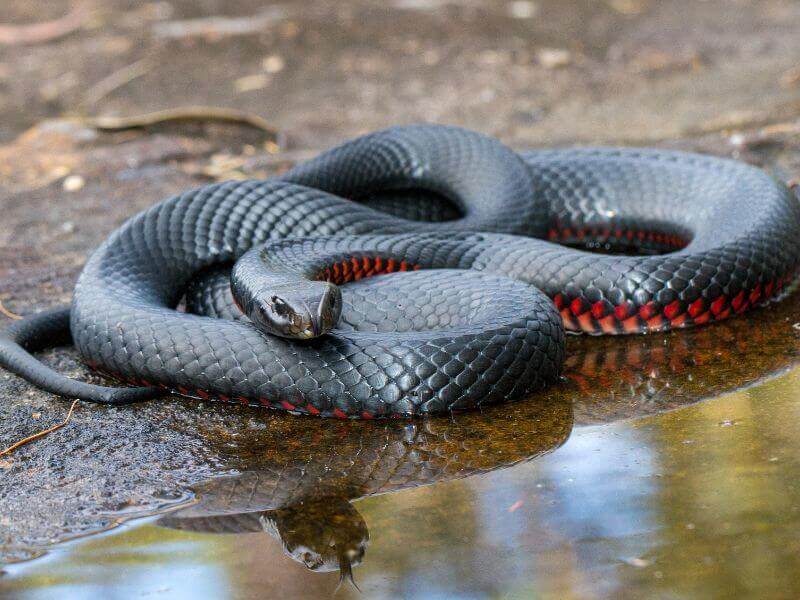
Red-bellied Black Snake
The Red-bellied Black Snake is easily identifiable by its black color and pinkish-red underbelly. It’s the most common venomous snake in gardens and its bite can be lethal. It prefers swampy, wet areas near ponds, dams, or frog habitats, often sheltering in thick grass, logs, burrows, or under rocks. No human deaths have been recorded from its bite.
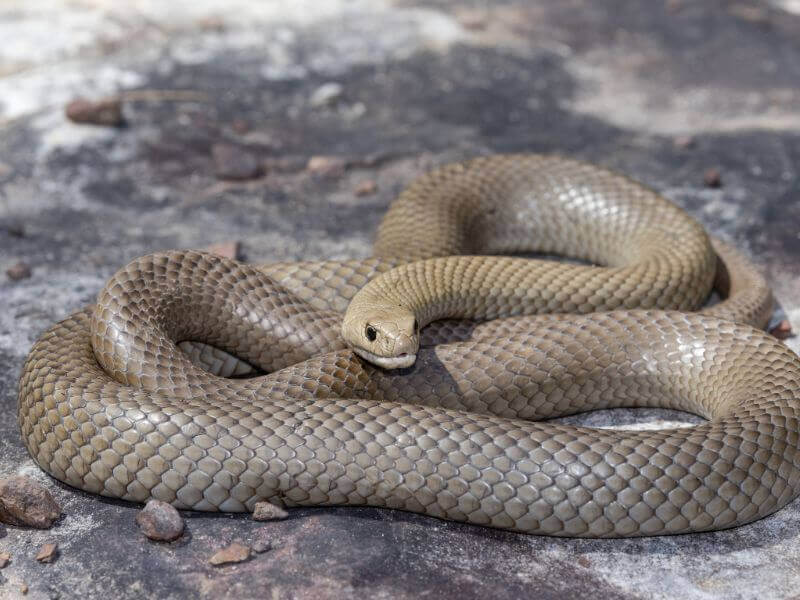
Eastern Brown Snake
The Eastern Brown Snake is another highly venomous often seen in the Hunter region during spring to autumn. Even little brown snakes are very poisonous. It can be found across a wide range of habitats but seem to prefer open landscapes and more abundant in rural areas. It is known to be more alert and defensive than the Red-bellied Black Snake so it is more likely to strike.
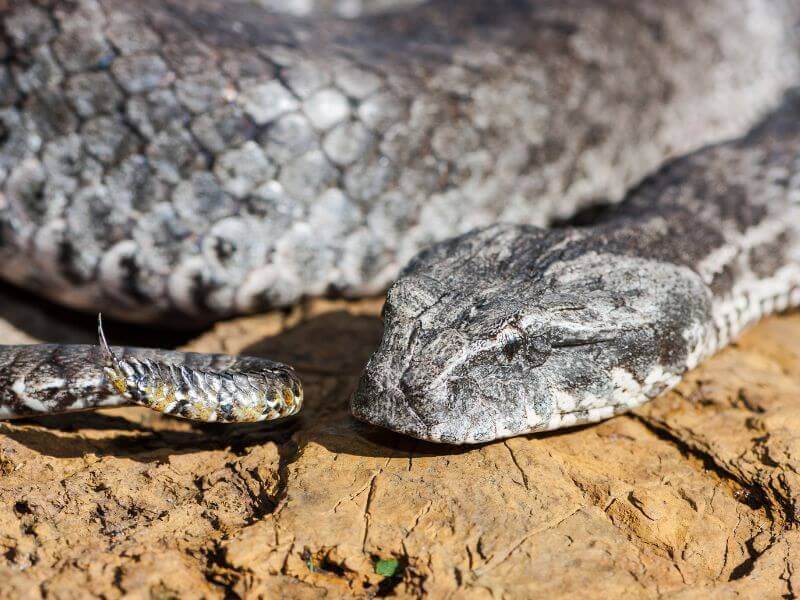
Common Death Adder
The Common Death Adder ambushes prey by lying motionless in leaf litter, sand, or gravel, using a worm-like tail lure. Highly venomous, it generally avoids biting unless touched. Unlike other snakes, it often remains stationary when humans approach, increasing the risk to unsuspecting bushwalkers.
Mildly Venomous Snakes
Mildly venomous snakes are venomous but not considered dangerous to humans. They’re bites will cause symptoms like pain, swelling and headaches. Every snake bite should be treated as if the snake were venomous though. See our first aid tips.
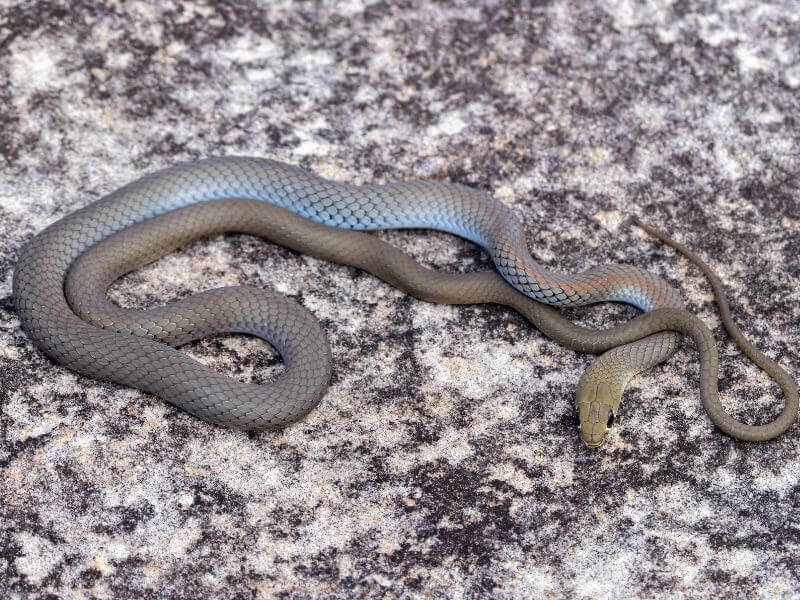
Yellow-faced Whip Snake
Yellow-faced Whip Snake grows to about 80-100 cms. It is very long and thin, with a small white patch in front of and behind its eyes and it moves very quickly.
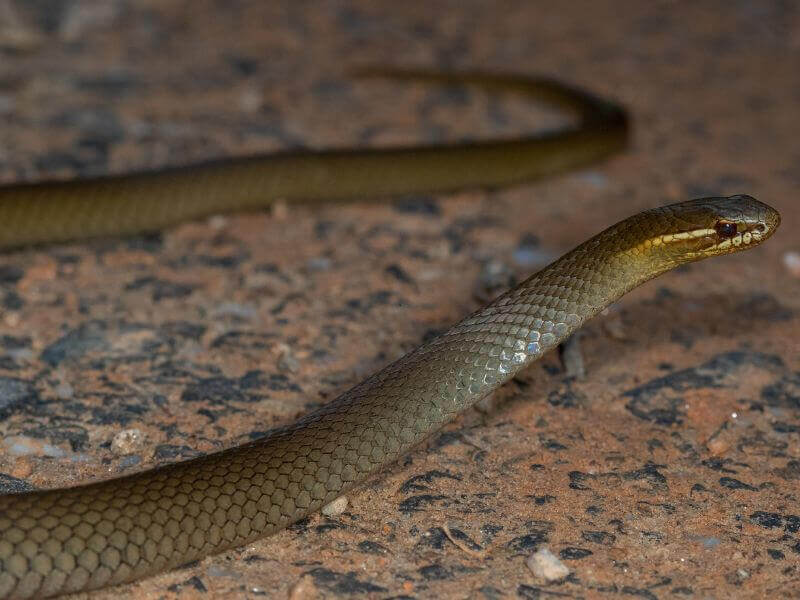
Marsh Snake
Marsh Snakes grow to about 50 cm, are olive-brown with creamy white stripes on their upper lip and behind the eye. They are often found in damp gardens, hiding under timber, iron sheets, or thick vegetation.
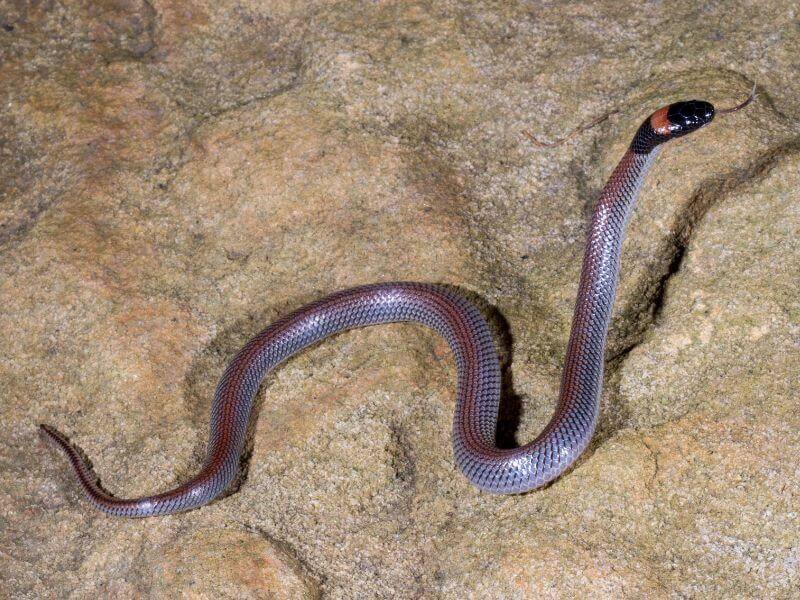
Red-naped Snake
The Red-naped Snake, with a red patch on its head, grows to about 45 cm. Although venomous, it is harmless to humans and prefers dry woodlands, coastal forests, heaths, tussock grasslands, and shrublands, avoiding wet areas like rainforests.
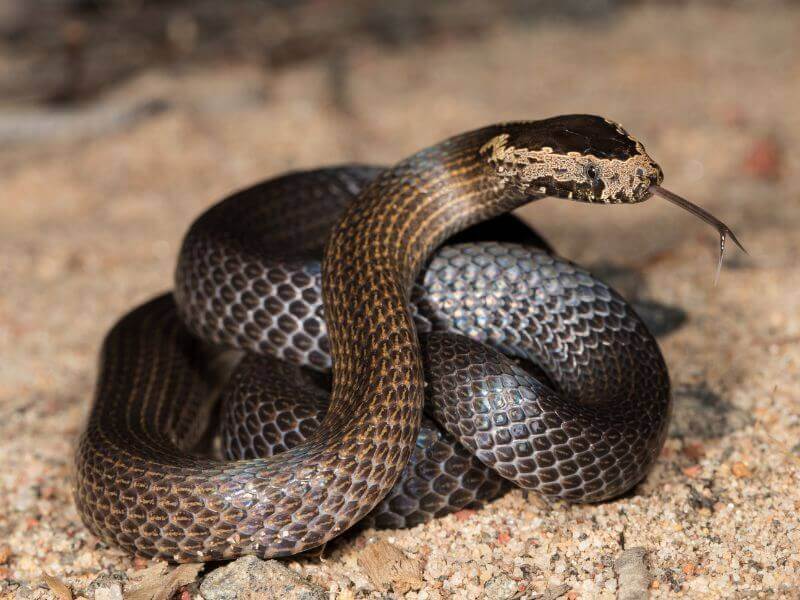
Golden-crowned Snake
The Golden-crowned Snake, with a yellowish crown-shaped mark on its head, is brown to grey above and pink below. It prefers deep forests or sandstone areas, sheltering under stones, logs, and leaf litter by day and feeding at night.
Non-Venomous Snakes
Non-venomous snakes do not produce venom and do not present any danger to humans. They can still bite or strike though if threatened.
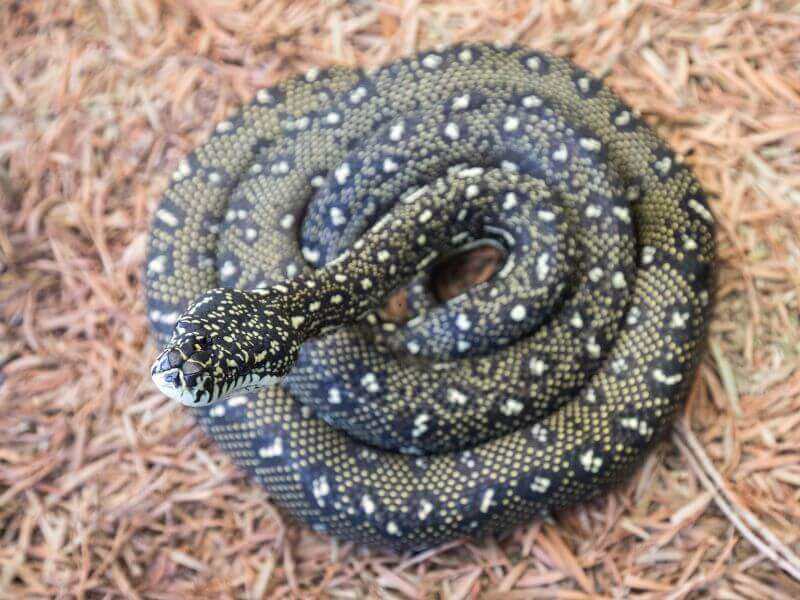
Diamond Python
The Diamond Python features small cream diamonds, sometimes forming rosettes. If you find one on a tree or fence, leave it alone unless it’s in danger. Harmless, they help control mice and rats but usually move on quickly.
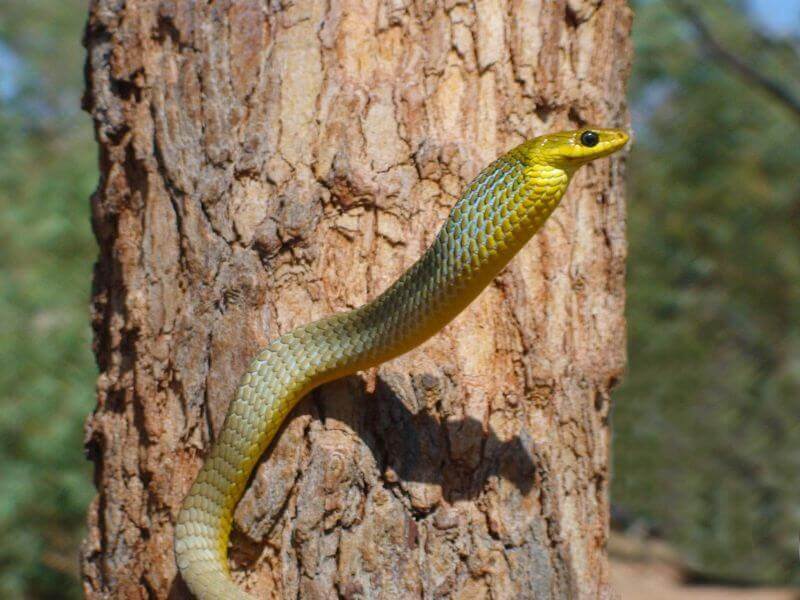
Green Tree Snake
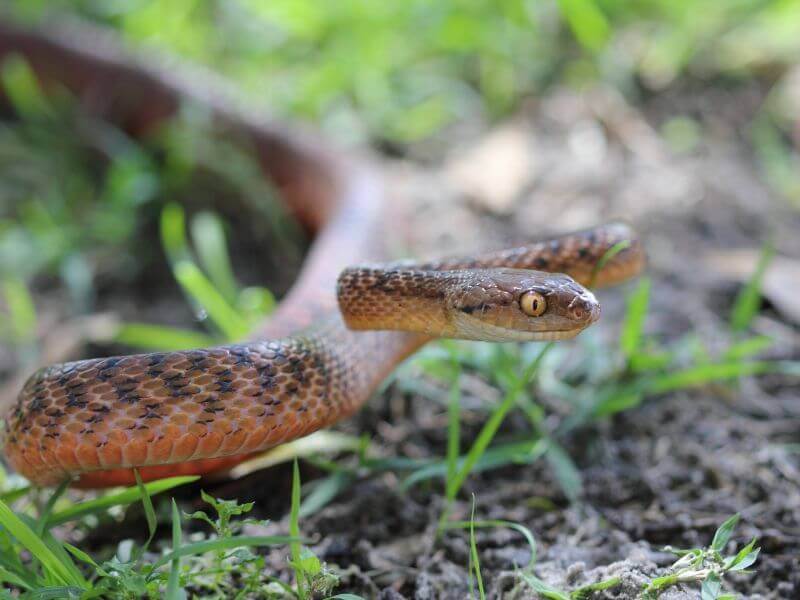
Brown Tree Snake
The Brown Tree Snake is similar but has very large brown bulgy eyes and a very narrow neck and has more pattern on their body scales.
Snake Bite First Aid
Many snakes are quite harmless to people, those which are dangerous will usually only bite to protect themselves. Most bites occur on the ankle or lower leg, so thick socks and strong shoes should be worn when walking through long grass or scrub. Treat all snake bites as poisonous, unless expert opinion is available at the scene.
If you have been bitten:
Keep calm. Especially if it is a venomous brown or red-bellied black snake. The calmer you are the slower the venom travels through your body.
If someone is with you –sit still while they get bandages to bandage around your wound and then they will ring for medical help and an ambulance.
If someone else has been bitten:
Source: Red Cross First Aid
1) Check for signs of life. If casualty is unconscious, follow DRABCD (Danger, Response, Airway, Breathing, CPR, Defibrillation).
2) Calm casualty. Keep the person calm and at complete rest.
3) Apply pressure immobilisation bandage • Apply a firm, broad roller bandage (5cm – 10cm) firmly over the bite site. With a second roller bandage, commence at the extremity of the limb and apply upwards, working towards the heart, to cover as much of the limb as possible. If only one bandage is available, commence at the extremities and work upwards including the bite site in the process. • The bandage needs to be very firm as would be used for a sprained ankle.
4) Immobilise casualty. Apply a splint to immobilise the bitten limb. Check circulation in fingers or toes. Ensure casualty doesn’t move. Once applied, the bandage and splint should be kept in place until the person reaches hospital.
5) Call 000 for an ambulance.
Signs & Symptoms
- puncture marks
- nausea, vomiting, diarrhoea
- headache
- double or blurred vision
- breathing difficulties
- drowsiness, giddiness
- pain or tightness in chest or abdomen
- respiratory weakness or arrest
